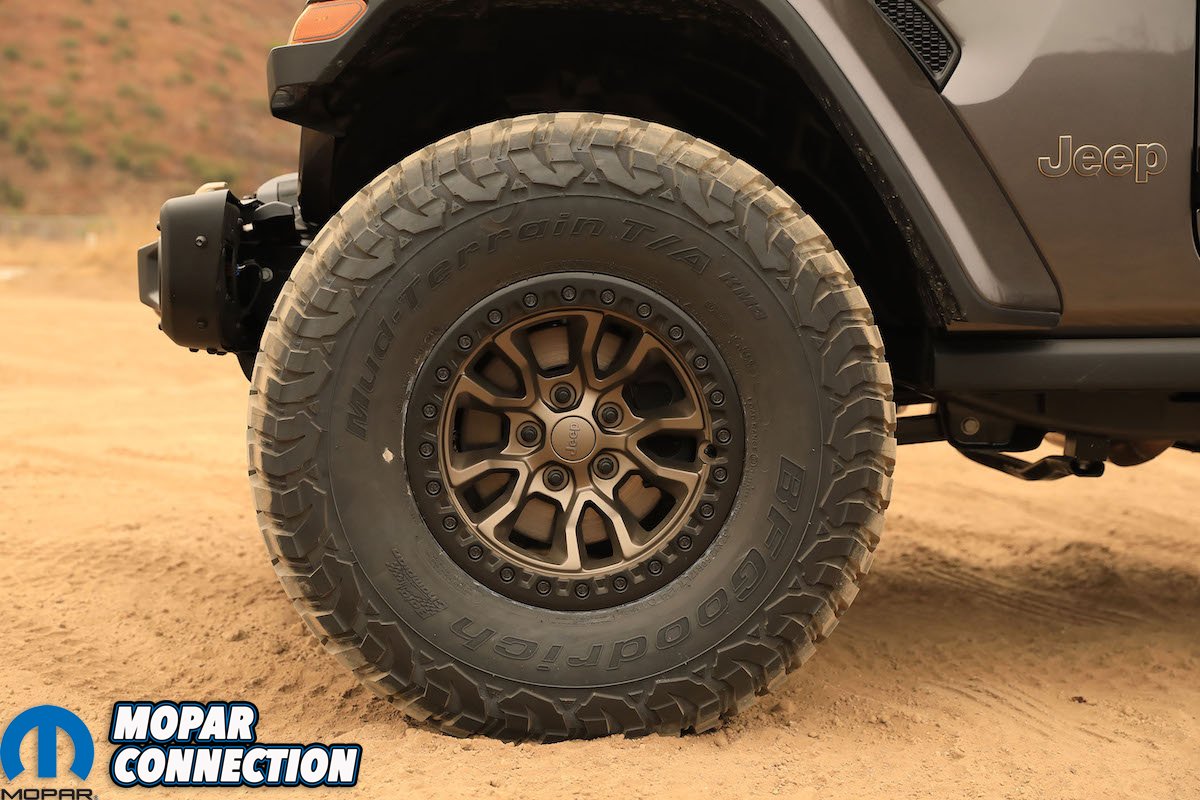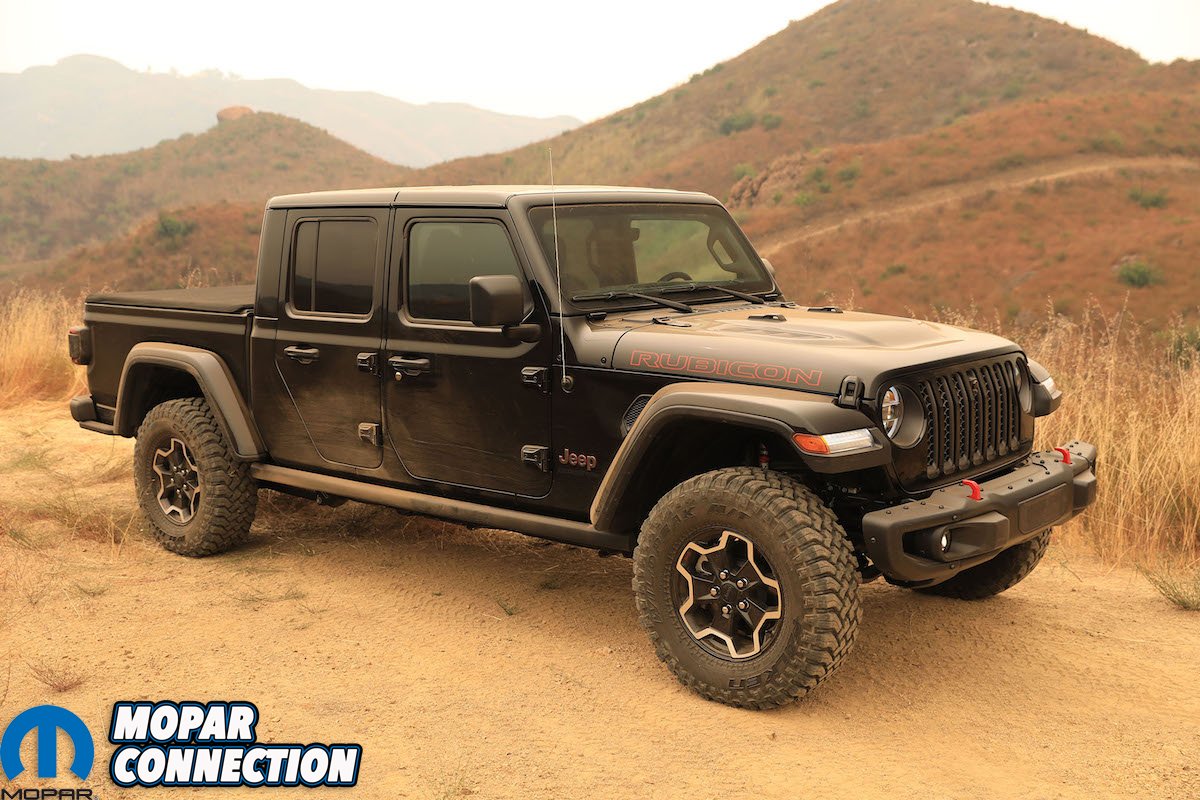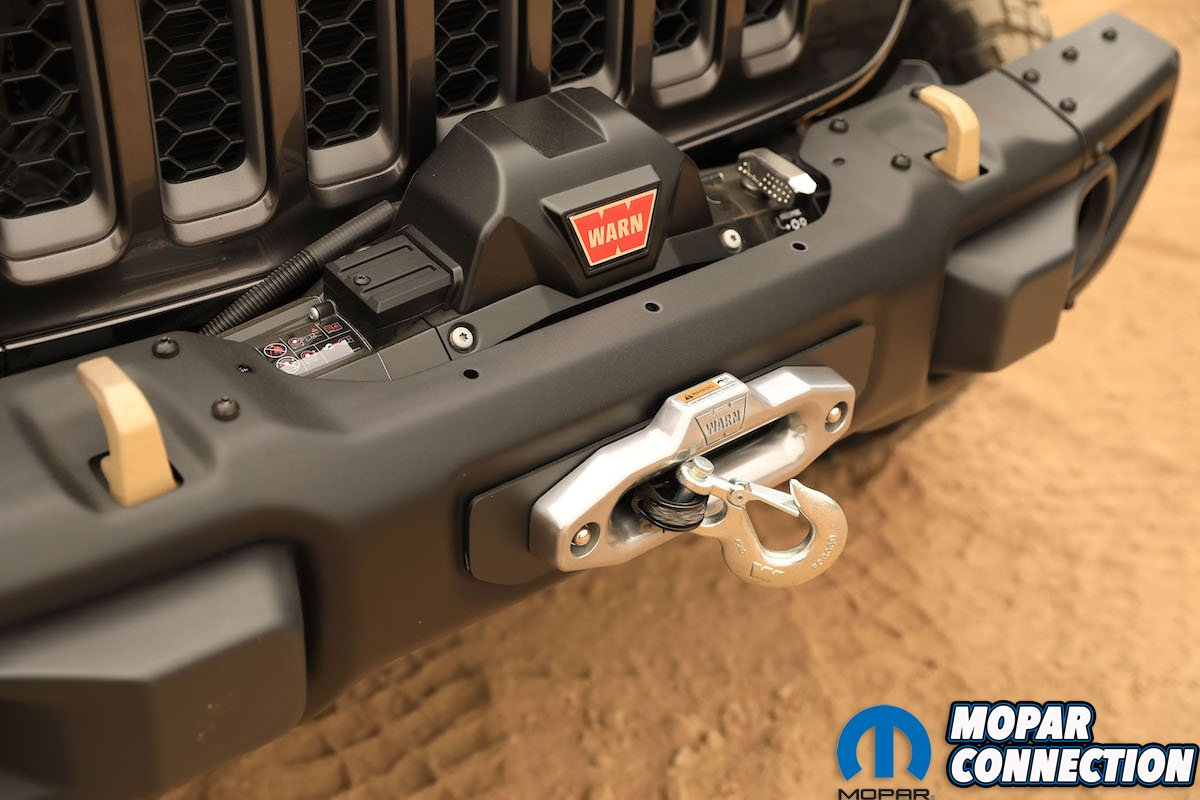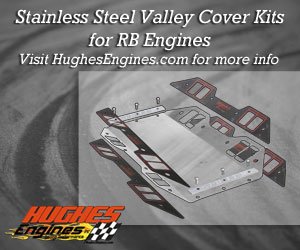
Jeep’s ongoing mission to give the people what they want was on full display earlier this month at Calamigos Ranch in Malibu, California. The site is an FCA favorite for vehicle tests on the west coast, as it combines challenging off-road terrain, the twisting tarmac of Mulholland Highway, and scenic beachside roads all in one convenient location.
That makes it a particularly ideal venue to get a feel for two of the automaker’s latest creations, the EcoDiesel-powered Gladiator and the Wrangler 392 Concept. Jeep had originally planned to debut the latter at this year’s Easter Jeep Safari in Moab, Utah, but COVID-19 concerns ultimately resulted in the cancellation of the annual event for 2020. So, in the interest of turning lemons into lemonade, they decided to hand us the keys to both machines and set us loose on this automotive playground instead.

Although the Gladiator EcoDiesel and Wrangler 392 Concept take two wholly different approaches to Jeep motivation, both were born largely as a result of customer feedback rather than clinical bean-counting.
“Our enthusiasts have never been shying about telling us what they want,” noted Jeep’s Brandon Girmus. “So as soon as we first showed off the Gladiator, one of the first questions we got was, ‘When are you going put a diesel into it?’ And the answer is: Now.”

The motivation to build the Wrangler 392 Concept followed a similar tack, Girmus told us. “For years, Wrangler customers have been also asking us when we were going put a V8 in a Wrangler. There were a lot of rumors on the forums that we would never be able to do it – that a Hemi wouldn’t physically fit in the engine bay. So we built this Wrangler 392 basically as a proof of concept – yes, we can do it.”
Still, the hopes and dreams of enthusiasts don’t always line up with the needs of the motoring public out in the real world. Do these enthusiast-driven iterations elevate the Gladiator and Wrangler to new heights, or are they just fan-fueled fever dreams? With the help of a heavy right foot, we intended to find out.

Gladiating On Another Level
You may recall that we spent some time with the Gladiator Mojave earlier this year, and one of the few complaints we had about the desert-tuned pickup centered on the powertrain. Outfitted with the optional gasoline-fed, naturally aspirated 3.6-liter V6, we noted that the 5000-pound truck tended to struggle at highway speeds with the six-speed manual transmission in top gear, necessitating frequent downshifts when we encountered moderately-graded hills in order to keep pace with the rest of traffic.
Available in Gladiator Sport, Overland and Rubicon trims, the EcoDiesel addresses this issue on several fronts. First off, it’s an automatic-only affair – you can’t option this engine with the standard six-speed manual transmission. That might be a bummer for some three pedal diehards out there, but the truth is, this truck is simply better with the eight-speed – better acceleration, better fuel economy, better off-road.

And that’s coming from someone who’s been daily-driving cars with manual gearboxes in Los Angeles for the past decade. Of course, the flip side of that coin is that it also automatically adds another $2000 to the price: the specially-tuned transmission is a mandatory add-on option here.
The engine itself adds another $4000 to the bottom line as well, which means the base Gladiator EcoDiesel starts at $41,040. Six grand is indeed a lot to pay for an oil burner, and you’ll need to rack up a lot of miles in order for the fuel savings to offset the cost, but the EcoDiesel really justifies its existence with just one word: Torque. Although the turbocharged, 3.0-liter EcoDiesel V6 comes in at a 25 horsepower deficit to the 285hp 3.6-liter V6, it makes up for it with a hopping 442 lb-ft of torque – up 182 pound-feet versus the gas six-pot – and peak pulling power comes in at just 1400 RPM.

Those gains are obvious from the first time you drop the hammer from a stop. After just a hint of turbo lag, the Gladiator moves out with some serious purpose as the quick-shifting gearbox works to keep the revs in the powerband’s sweet spot. Need to pass on the freeway? No need to plan ahead – it’s effortless here. The new engine is quiet, too, and returns 22 mpg city, 28 highway, and 24 combined – aided in part by a taller 3.73 axle ratio across all Gladiator EcoDiesel models. These figures are best-in-class for both torque and fuel economy among mid-sized trucks.
And the diesel’s virtues aren’t limited to the pavement, either. Out on the trails in Rubicon guise, the new mill makes the Gladiator feel simply unflappable. Gobs of low-end torque always seem to be at the ready no matter what mode the transfer case is in, comprehensively addressing one of few weaknesses of the gas-powered truck. Regardless of the obstacle or grade, this thing just never breaks a sweat, and it’ll crawl down a steep decline with hill descent control at speeds as low as 0.6 mph. So while the cost of entry is a bit steep, the benefits are obvious. Simply put, this is the engine that the Gladiator is supposed to have.

Wrangling Hemi Power
Although the Gladiator EcoDiesel is undoubtedly a welcome addition to the Jeep lineup, it was clear which vehicle was the star attraction at this event. Earlier this year, just as Ford was poised to take the wraps off of the new Bronco, Jeep just so happened to have an announcement of their own to make.
The concept posits the notion that while Ford fans may never see a V8 in the Dearborn’s new off-roader, Jeep’s faithful might not have to wait much longer for a Wrangler with a Hemi under the hood. “We’ve never had a V8 in a Wrangler – we had one available in the CJ-5 and CJ-7 back in the 70s and up until 1981, but never in the Wrangler,” Girmus explained.
While this driveable concept puts rumors of the impossibility of a Hemi-powered Wrangler to rest, the effort required to make it work indicates that the Hemi wasn’t really a fundamental design consideration during the development of the JL platform. “We did have to reinforce the frame as well as the engine mounts to handle the additional horsepower and torque,” Girmus told us.

In this application, the 6.4-liter Hemi V8 makes 450 horsepower and 450 pound-feet of torque. Those numbers are down a bit from the 392’s numbers in a Dodge Challenger or Charger Scat Pack, which both dish out 485 hp and 475 lb-ft. We couldn’t help but wonder if that came down to packaging constraints – the Hellcat’s exhaust manifolds had to be redesigned for use with the Grand Cherokee Trackhawk, for instance, and it lost 5 pound-feet in the process. But that’s not the case here.
“It actually comes down to the drivetrain hardware we’re using with this concept, which are off-the-shelf Wrangler Rubicon parts,” Girmus said. So although the concept is a real, usable vehicle, there’s still some more engineering work to be done before something similar is ready for showrooms.
Still, the nice thing about concepts is that they don’t really have to address the inevitable compromises that need to be made for mass production, and that benefits the Wrangler Rubicon 392 concept in a variety of ways. Touches like the painted half-doors and 37-inch BFG Mud Terrain tires give the concept a beefy, custom look, but are likely to end up on the cutting room floor if Jeep makes this Wrangler a reality.
With these tires and a Jeep Performance Parts two-inch lift kit, Jeep says the concept offers 13.25-inches of ground clearance and 34 inches of water fording capability. Break-over and departure angles have been improved as well, but when pressed for the setup’s effect on suspension articulation, Girmus admitted that some of the head-turning aesthetic does come at a functional cost.
“It’s a concept vehicle – what we say is that, on a standard Rubicon with a standard flare and a two-inch lift, you accommodate 35-inch tires with no rubbing of the fenders. But with this setup and the 37s, under really extreme articulation you probably are going to get some rubbing.”
Regardless, the groundswell of enthusiasm behind the idea of a factory-built Wrangler 392 is undeniable. “We’re getting a lot of feedback from the Jeep community along the lines of, ‘Shut up and take my money, and where do I send my deposit check to?’” he quips. “There’s a lot of excitement behind this.”

From behind the wheel it’s not hard to see why. Even though the 392 is down a few ponies from production spec, the Wrangler is a formidable machine with the 6.4-liter under the hood. Paired with a quick-shifting eight-speed automatic, it hits 60 mph from a dead stop in less than five seconds.
It also sounds absolutely glorious while doing so, thanks in part to a two-mode active exhaust system, which allows you to hear that Hemi sing more clearly than anything on the market. Dodge currently doesn’t make a convertible Challenger, but if they did, we bet it would sound a lot like this from the driver’s seat.
While our seat time was largely relegated to the road, there’s no doubt this one-off concept would make short work of the neighboring trails. If we’re honest, the 392 might even be overkill in this application – the 5.7-liter Hemi V8 would probably get the job done with horsepower to spare. But that’s not the way Jeep does things, and that’s one of the reasons they’ve cultivated such a diehard fan-base over the years. So, when the next logical progression was brought up, Girmus didn’t exactly rule that out, either.

“Do the modifications made for the 6.4-liter V8 happen to work with, I don’t know… a 6.2-liter Hemi with a supercharger?” a colleague coyly asked. “Maybe,” Girmus responded knowingly. “We did that with the Trailcat concept a few years ago, but that was based off of the JK platform. We haven’t done a JL with the Hellcat engine.”
Although the Hellcat Hemi is taller than a 392 due to its supercharger, and would likely need more room in the engine bay to meet its intake, exhaust, and cooling demands, the two mills do share a common block architecture. And that means that some of the work required to bring a JL-based Trailcat to life has already been done. Girmus paused for a moment to consider the possibility. “In theory, I think we could probably fit it in there.”



































